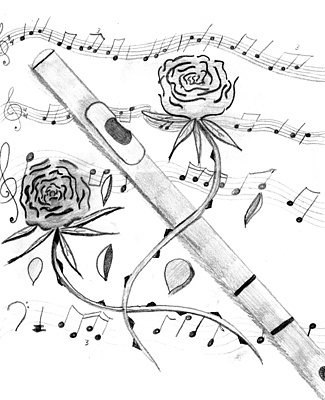All Nonfiction
- Bullying
- Books
- Academic
- Author Interviews
- Celebrity interviews
- College Articles
- College Essays
- Educator of the Year
- Heroes
- Interviews
- Memoir
- Personal Experience
- Sports
- Travel & Culture
All Opinions
- Bullying
- Current Events / Politics
- Discrimination
- Drugs / Alcohol / Smoking
- Entertainment / Celebrities
- Environment
- Love / Relationships
- Movies / Music / TV
- Pop Culture / Trends
- School / College
- Social Issues / Civics
- Spirituality / Religion
- Sports / Hobbies
All Hot Topics
- Bullying
- Community Service
- Environment
- Health
- Letters to the Editor
- Pride & Prejudice
- What Matters
- Back
Summer Guide
- Program Links
- Program Reviews
- Back
College Guide
- College Links
- College Reviews
- College Essays
- College Articles
- Back
Honeymoon by Lana Del Rey
Lana Del Rey has been known for being a sultry songstress in the world of pop music since her first album, Born To Die, and despite the mixed reviews of critics, it is safe to say her lyrics and vintage persona have left a mark in pop culture. Del Rey’s lyrics are captivating stories that reveal her glamorous and edgy past, usually visually accompanied in her music videos with swimming pools and late night drive ins. Released in September 2015, her fourth studio album Honeymoon drifts from the moody aura and darker themes her previous album Ultraviolence conveyed, bringing in a more ethereal and surreal sound.
The dramatic and emotional violin in the title track, “Honeymoon,” starts the album off with cinematic vibes as Lana coos the first verse in her signature deep voice and haunting tone: “We both know, that it’s not fashionable to love me.” The album follows with another moody track, “Terrence Loves You,” which is then followed up by a more celestial track, “Music to Watch Boys To,” where Del Rey’s trademark vintage persona is truly reflected as she sings about pink flamingos and lemonade with a soft drum beat in the background. The eerie track “God Knows I Tried” is similar to the melancholy vibes felt in Ultraviolence, and is then followed up by “High By the Beach,” an angsty song with a powerful beat that shifts from Del Rey’s usual airy sound to a more catchy and pop-esque direction. “Freak” follows after with an atmospheric melody and beat that smoothly transitions to “Art Deco,” which captures the album’s harmonious chill vibes. “Burnt Norton - Interlude” is a chilling and ethereal recitation of T.S. Eliot’s famous poem delivered by Del Rey herself, which introduces the nostalgic pop anthems “Religion,” “Salvatore,” “The Blackest Day,” “24,” and “Swan Song” that are similar to the tracks in Born to Die but with a cinematic twist. The album closes with a strong cover of Nina Simone’s famous song, “Don’t Let Me Be Misunderstood,” and it is the second time Del Rey follows the trend of Ultraviolence with the last song being “The Other Woman,” tying some of the same elements from her previous albums to create the perfect, whimsical sound of Honeymoon.
As a huge fan of Lana Del Rey, I believe Honeymoon is her best album yet because she incorporates all of her previous sounds and lyrics to create the perfect compromise between Born to Die and Ultraviolence. Honeymoon is a unique pop masterpiece that will definitely not disappoint fans and new listeners.

Similar Articles
JOIN THE DISCUSSION
This article has 0 comments.
